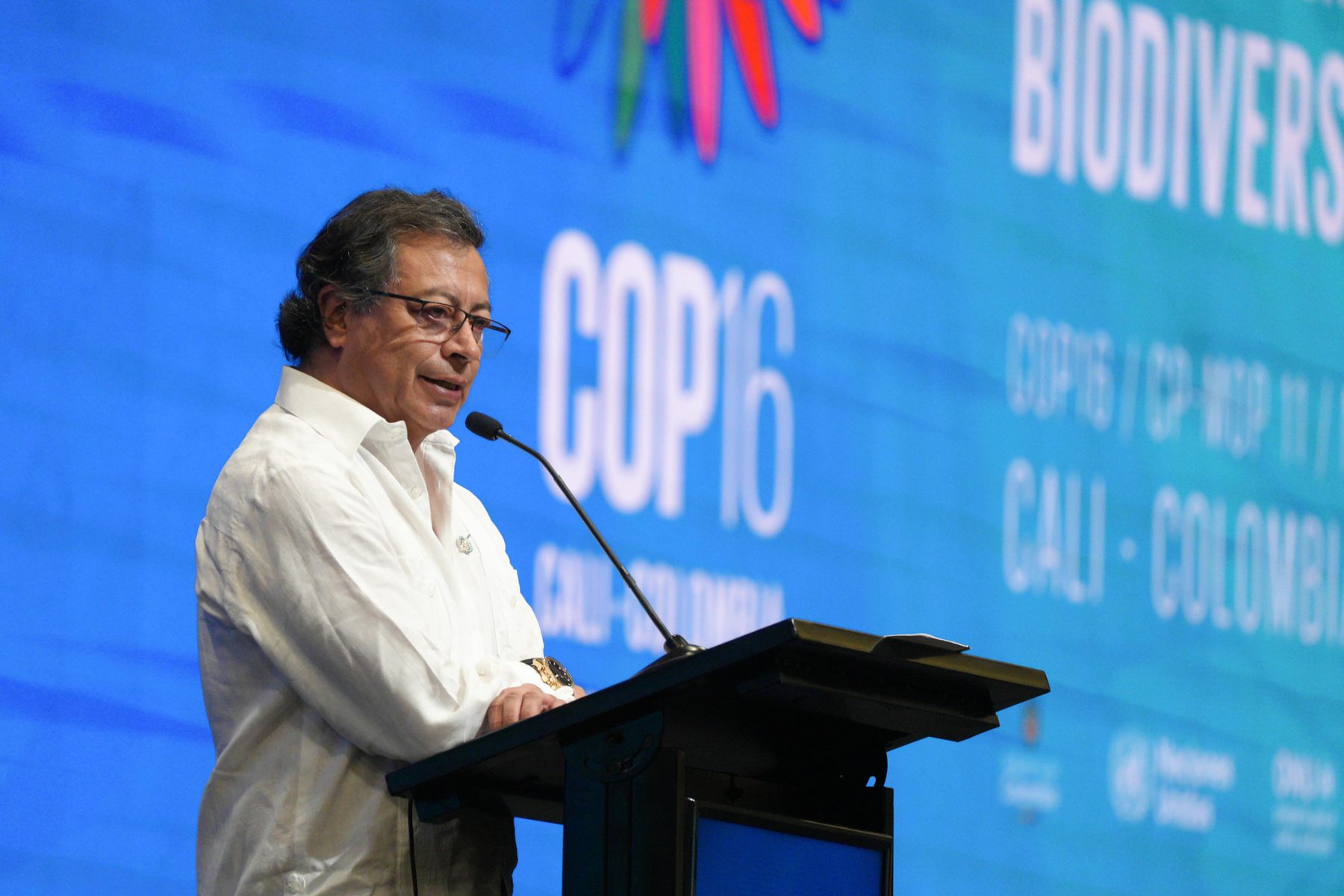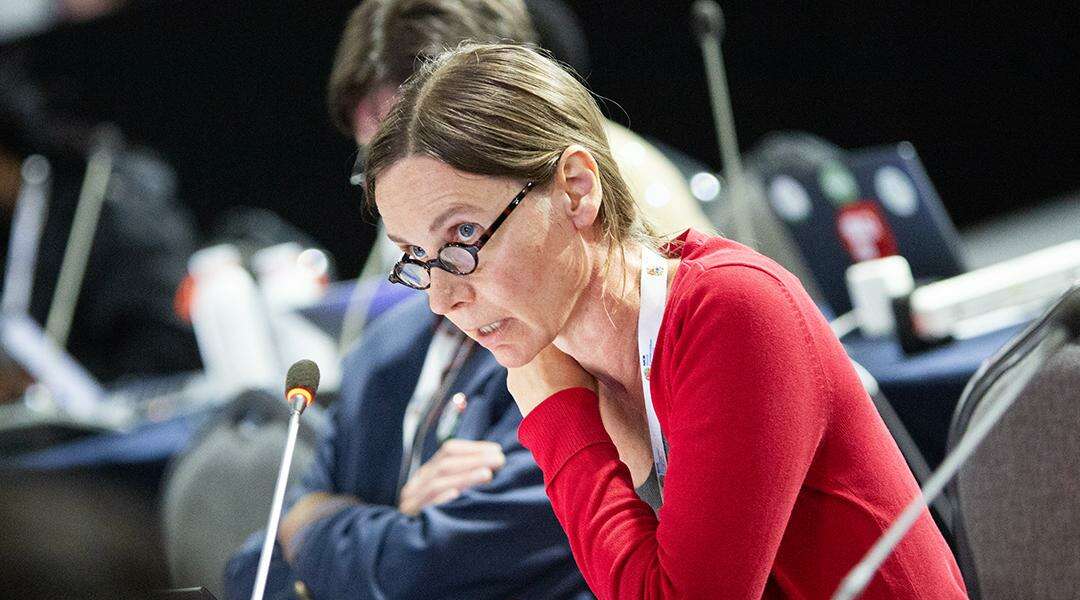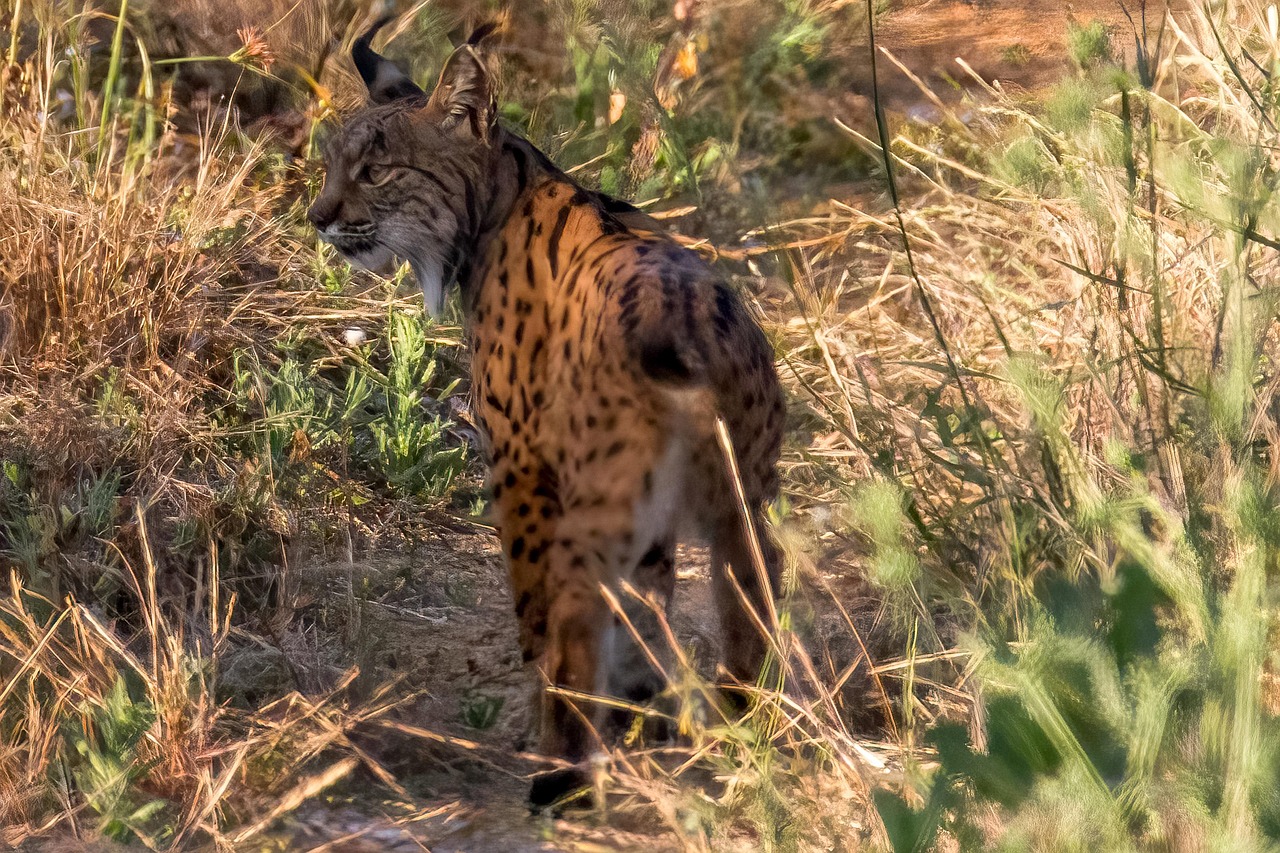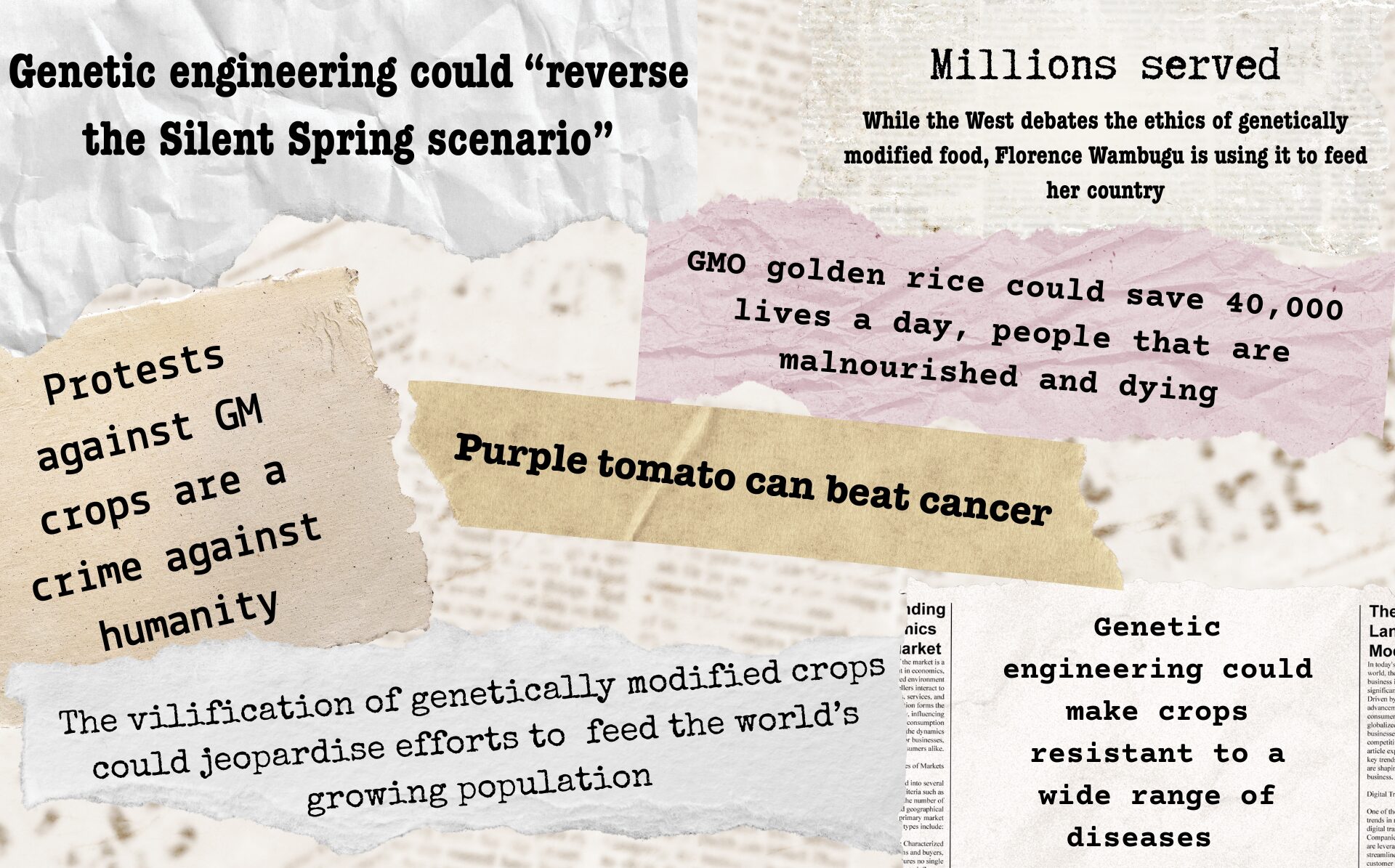“The beginning of the end of life is nigh,” warned Colombian President Gustavo Petro at the opening ceremony of the UN Convention on Biological Diversity’s (CBD) 16th Conference of Parties (COP) in Cali, Colombia, in October. This UN multiparty process is aimed at “sustaining life on earth” and is sibling to the more famous climate COP. Its objectives include the conservation of biological diversity and the sharing of its’ benefits through appropriate access to genetic resources. President Petro used his platform to call for a “global revolution for humanity” to defend life.
Yet Petro’s rallying cry did little to bolster the talks, which ended two weeks later in a mess of prolonged negotiations, missed flights and frustrated attendees. Photographs of the final plenary – which went through a whole extra night – show delegates asleep on their desks. Though some advances were made, in other areas processes were reportedly derailed by corporate interests. This was perhaps no surprise given that company representatives were embedded in the country delegations of the most powerful – and obstructive – nations, whilst their numbers dwarfed those of some money-poor but biodiversity-rich states.
For those concerned about the unregulated and potentially uncontrollable spread of genetically modified organisms, there was a lot at stake.
Synthetic biology
The CBD has previously agreed a process of horizon scanning, assessment and monitoring of synthetic biology – the design or redesign of new or existing life forms using genetic engineering, which is increasingly being done with the use of Artificial Intelligence (AI). Whilst this horizon scanning process survived calls to be completely ‘disestablished’, future work will be scaled down and the focus will shift to capacity building and development, technology transfer and knowledge sharing. The UN’s end-of-COP summary heavily emphasised the “potential benefits” of synthetic biology and “helping countries” apply such technologies.
Prior to the talks an expert group had assessed five prioritised topics in relation to synthetic biology: AI; gene drives which are claimed could control vector-borne diseases and invasive species; self-limiting insect systems; self-spreading vaccines intended for wildlife; and inequity in the participation of countries in the Global South. The expert group recommended in-depth assessments to address governance gaps, but these assessments suffered a blow and will not be conducted – at least not before the next COP.
Gene drives
Gene drives are an extreme form of genetic engineering that are intended to permanently alter or wipe out entire populations of wild species. They have been proposed or are under development for at least 82 species. A prominent target are mosquitos, which spread diseases including malaria. Research is also being conducted into the use of gene drives for agricultural pest control and invasive species, including mice, squirrels and starlings.
In addition to what was agreed under the synthetic biology work stream, voluntary risk assessment (RA) guidelines for gene drives were adopted during the conference. But questions have been raised over potential conflicts of interest arising during the development of the guidelines. They will not be independently reviewed, as called for by a coalition of non-governmental organisations. Concerned scientists and civil society organisations have warned that they are not fit for purpose as they are too narrowly devised and based on concepts that are 20 years old. As such they were designed for annual crop plants, with a focus on the toxicity aspects of insecticide-producing plants. In such circumstances “spread and persistence is an established risk to be avoided and mitigated against,” rather than, in the case of gene drives, “being an integral and explicit design intention.”
According to one observer, the approach is very limited and was designed by industry, which was pushing against the comprehensive risk assessment approach of public scientists. “It’s a GM industry concept that was created some 20 years ago for easy assessment (and acceptance) of insecticide-producing crops,” says the observer, a critical scientist. “It has found its way into the processes adopted by government agencies, counter to the objections of many critical scientists and Civil Society Organisations. This is particularly concerning given that it might now be used to set a precedence.”
According to the description of a side event at the COP organised by the European Network of Scientists for Social and Environmental Responsibility, the Third World Network, EcoNexus and the Association of German Scientists:
Developers have great vested interest in making RA an exclusive rather than inclusive process to lower costs and also responsibility and accountability for both efficacy and harm or risks… Without careful, scientifically rigorous and broadly agreed adjustments, the RA guidance is scientifically unfit for purpose… Simultaneously, a whole host of suitable, tested and documented scientific alternative risk assessment concepts are categorically ignored.
Digital sequence information and generative biology
Digital versions of biological “codes”, such as DNA or amino acids in proteins, are known as Digital Sequence Information (DSI). It is taken from plants, animals, other organisms and viruses and used by companies to develop products such as drugs and cosmetics. Technology horizon-scanner Jim Thomas describes it as “the raw commodity powering the global $1.5 trillion dollar biotech industry.”
The headline agreement of COP16 was to create a voluntary fund which will channel some of the profits derived from this digital genetic information into conserving some of the plants and animals from which it is taken. According to the UN, which will administer the fund, this was “a historic decision of global importance” which will mean the benefits of DSI will be shared with “developing countries and Indigenous Peoples and local communities”.
But this is a divergence from the discussions on biopiracy (theft of genetic material) that have been a historic feature of the CBD. These were framed in terms of payment for what is taken, with the aim for money to go directly to the source communities and countries rather than via a general fund. Nithin Ramakrishnan, a senior researcher at the Third World Network, claimed that the fund could in fact promote biopiracy, and pointed to the fact that it undermines a country’s ability to control who gets to use its genetic resources.
According to Thomas, the implications of this ‘Cali Fund’ stretch beyond biotech to Big Tech – AI giants “who may be most on the hook to pay”. Companies such as Google, Microsoft and Amazon are developing artificial intelligence systems that use DSI to train computers to invent new genomes, viruses, proteins, vaccines and more.
This nascent field of generative biology involves taking two experimental and unpredictable technologies (genetic engineering and AI), providing them with the power to design life forms, and putting them under the control of some of the most powerful companies on the planet. See the report “Black Box Biotech” for more on the associated risks.
New GMOs
Genetically modified organisms are named Living Modified Organisms by the CBD and their release and trade is subject to a supplementary mechanism, the Cartagena Protocol on Biosafety. Key Protocol issues include risk assessment, transboundary movements and public awareness, whilst a Biosafety Clearing-House facilitates the exchange of information.
The British government has claimed that the Protocol does not apply to organisms it categorises as “precision bred” – those that “could have occurred naturally or been produced by traditional methods.” These include but are not limited to gene edited organisms. Likewise the EU does not intend to regulate organisms produced using New Genomic Techniques (NGTs) in accordance with the Protocol.
With the deregulation of newer forms of GMOs on the horizon globally, how they are designated under Cartagena is of critical importance, but little has been published about the relevant discussions at COP16. According to Lim Li Ching of the Third World Network, a collection of pro-biotech states did not want to discuss whether gene-edited crops are recognised as LMOs, but a process was set up to facilitate this discussion and the outcomes will be considered in two years’ time. There will be another debate and another chance to uphold the Cartagena Protocol and its precautionary approach. However, by this time it is likely that the deregulation agenda will have led to facts on – or rather crops in – the ground.
A dangerous pivot
Despite all of the above, perhaps the most worrying issue to emerge from COP16 was the way in which emerging genetic technologies are being positioned as part of the solution to the biodiversity crisis. “Biotechnology was sneaking in everywhere,” says Naomi Kosmehl, policy and advocacy coordinator at Save Our Seeds. “It wasn’t just where you might expect it in sessions on synthetic biology and gene drives, but also in discussions on health and conservation. “Safe biotech” was being promoted everywhere.” Stop Gene Drives and the CBD Alliance have also reported on a push to shift the CBD’s focus from regulating biotechnologies to promoting them.
According to the Alliance for Food Sovereignty in Africa:
This year, corporate interests have shown up in full force, with companies pushing so-called “nature-positive” solutions that look like ‘peace with nature’ on the surface but are rooted in market-based schemes that ultimately deepen environmental and social injustices. Synthetic biology, digital sequence information, and biodiversity “credits” sound promising in polished presentations, but behind these buzzwords lies a hidden agenda—one that seeks to commodify nature, to put a price on what is priceless.
Source: GMFreeze






